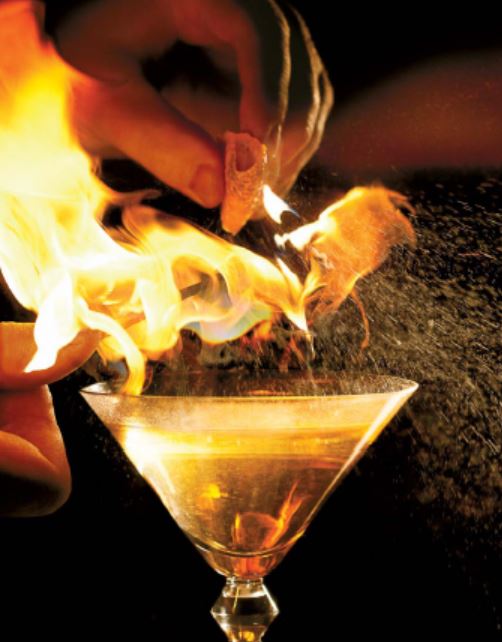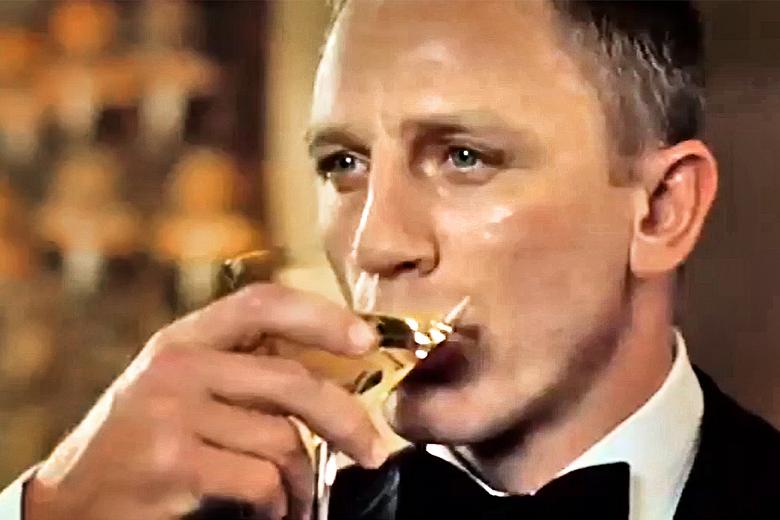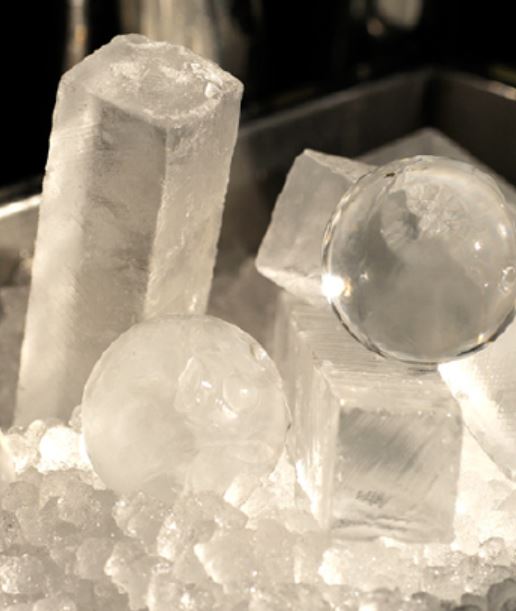Flaming citrus oils over cocktails is hardly new. Famed barman Pepe Ruiz was flaming peels in 1970 when he created the Flame of Love Martini for Dean Martini at Chasens Bar in Los Angeles and the practice started long before that.The technique is easy enough to learn, but if done improperly can completely ruin a cocktail. Igniting the essential oils that are found in citrus peals greatly increases the aromatics and puts on an attention grabbing visual show for the guests.Here are some basic tips on how to flame citrus oils over a cocktail:
1.THE RIGHT CUT- Make sure to cut your twists fresh right before use.If you cut them in advance they will dry out within an hour and will not release their oils when needed.The cut should be round, about the size of a half dollar.Thick skin peels are best since thin skinned juice fruits have less oil. Also, avoid cutting too deep and getting the peel wet from the juice of the fruit.
2.MATCH IT UP- Always use wooden match sticks, never butane lighters.Butane will leave a slightly unpleasant odor which defeats the purpose of igniting the oils in the first place.Also, it is important to let the smoke from the carbon tip of the match burn-off before executing.
3.HEAT THINGS UP- Once you’ve cut the peal, struck the match and are ready to ignite, take a moment to run the tip of the match back and forth directly under the peel.This will warm up the skin allowing more oils to be released. You should try to use a citrus peel that reflects the citrus juice in the cocktail… if any; orange peels to orange juice, lime peels to lime juice, etc.
4.DON’T GET BURNED- Perhaps the most important tip is to make absolutely certain that you don’t hold the flame to close to the surface of the drink.If you squeeze the oil over the flame too close to the surface, you will leave a black carbon smudge on top of your cocktail which not only looks terrible, tastes bad, but smells outright disgusting.Instead, hold the flame at least two inches above the surface and the peel either two inches above the flame or one inch to the side of the flame.
5.BE GENTLE BUT FIRM- One of the biggest mistakes a beginning bartender can make is accidently squeezing the oils out of the peel prematurely.Once you cut a peel, it should be treated like parchment paper.Delicately pick it up in-between your index finger and thumb with the outside skin face down.Take great care not to squeeze while picking it up, however when you do squeeze, be firm and fast.The idea is to get the oils to spray out in one quick burst directly over the flame.
6.SMILE DARN YOU SMILE- Smile! After all, you are putting on a show for the guests.They love the theater and will often ask questions.Flaming oils draws attention and starts up conversations.This is an opportunity to increase check averages by offering a second round. Finally, don’t forget to extinguish the match or you may end up with a garbage can fire!



